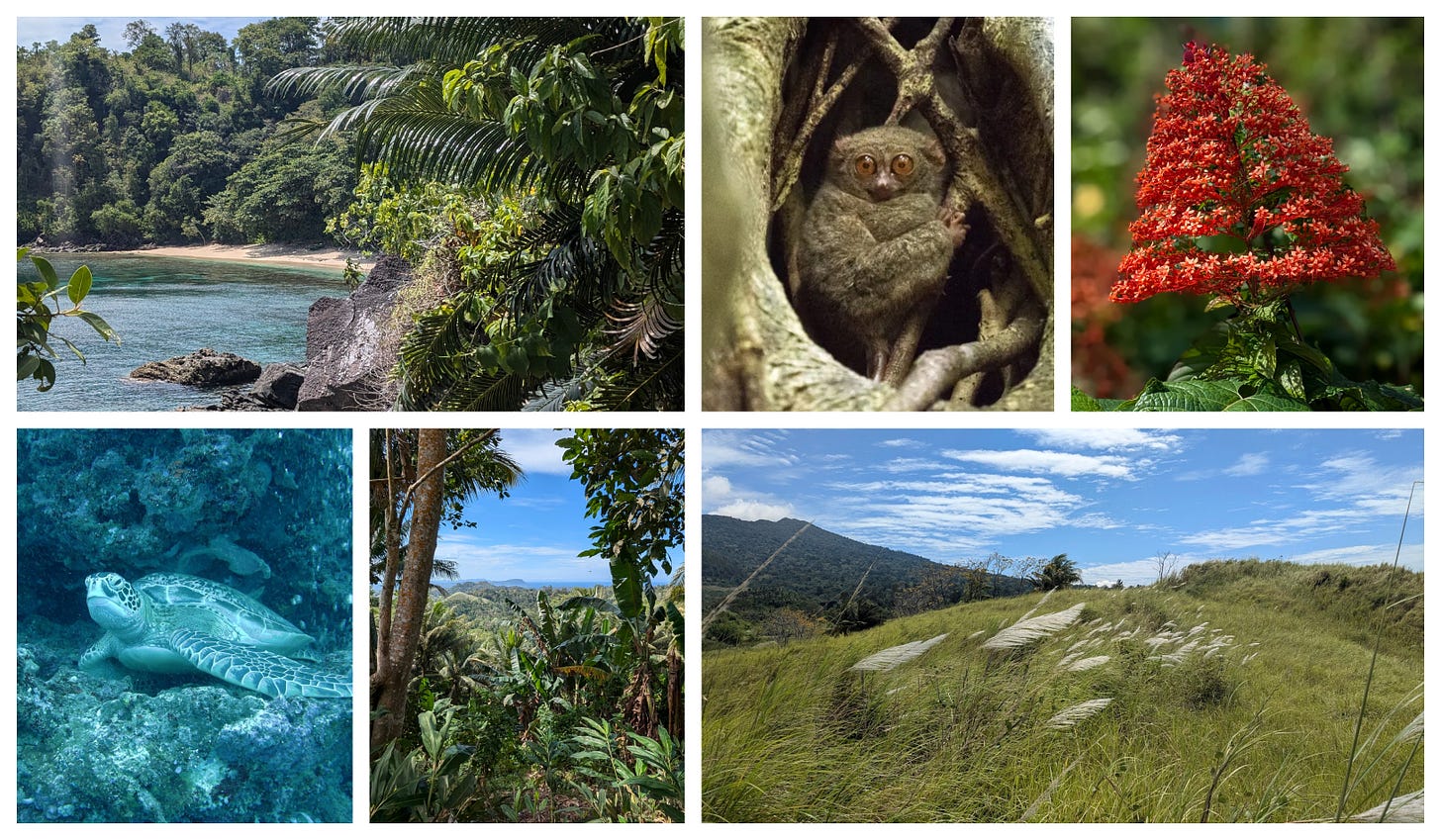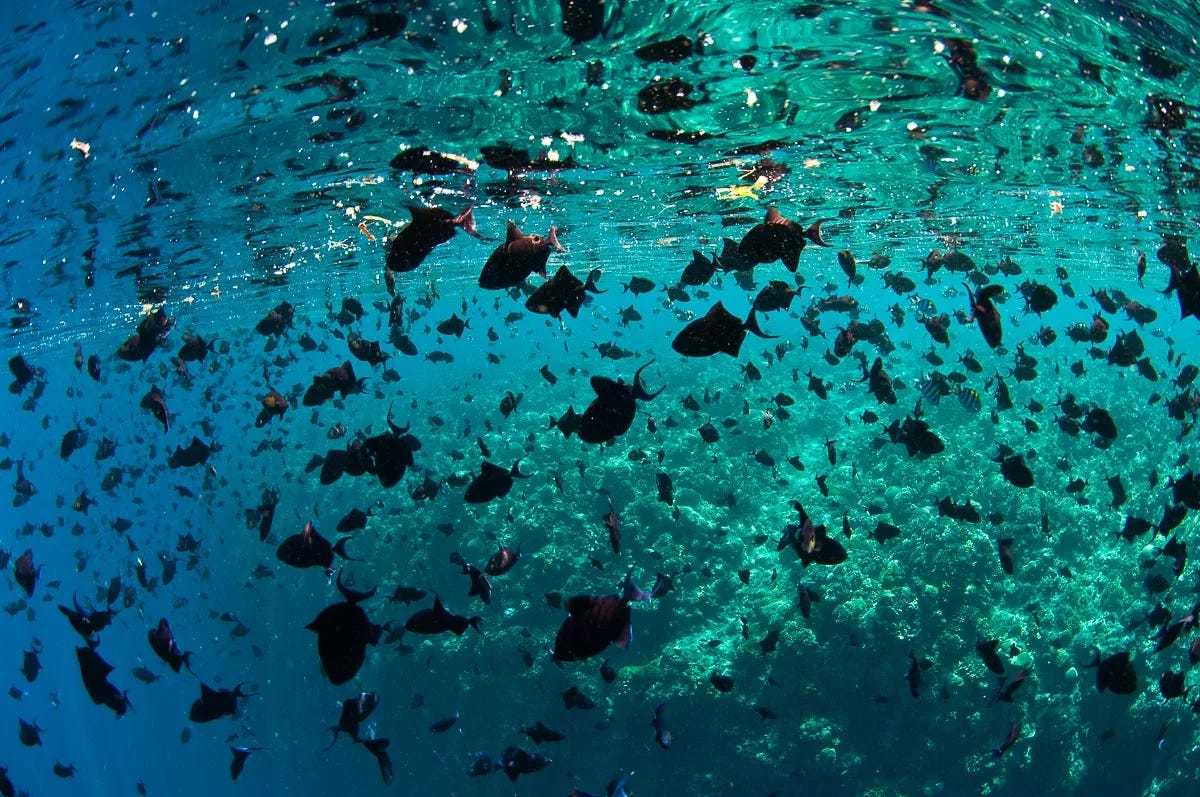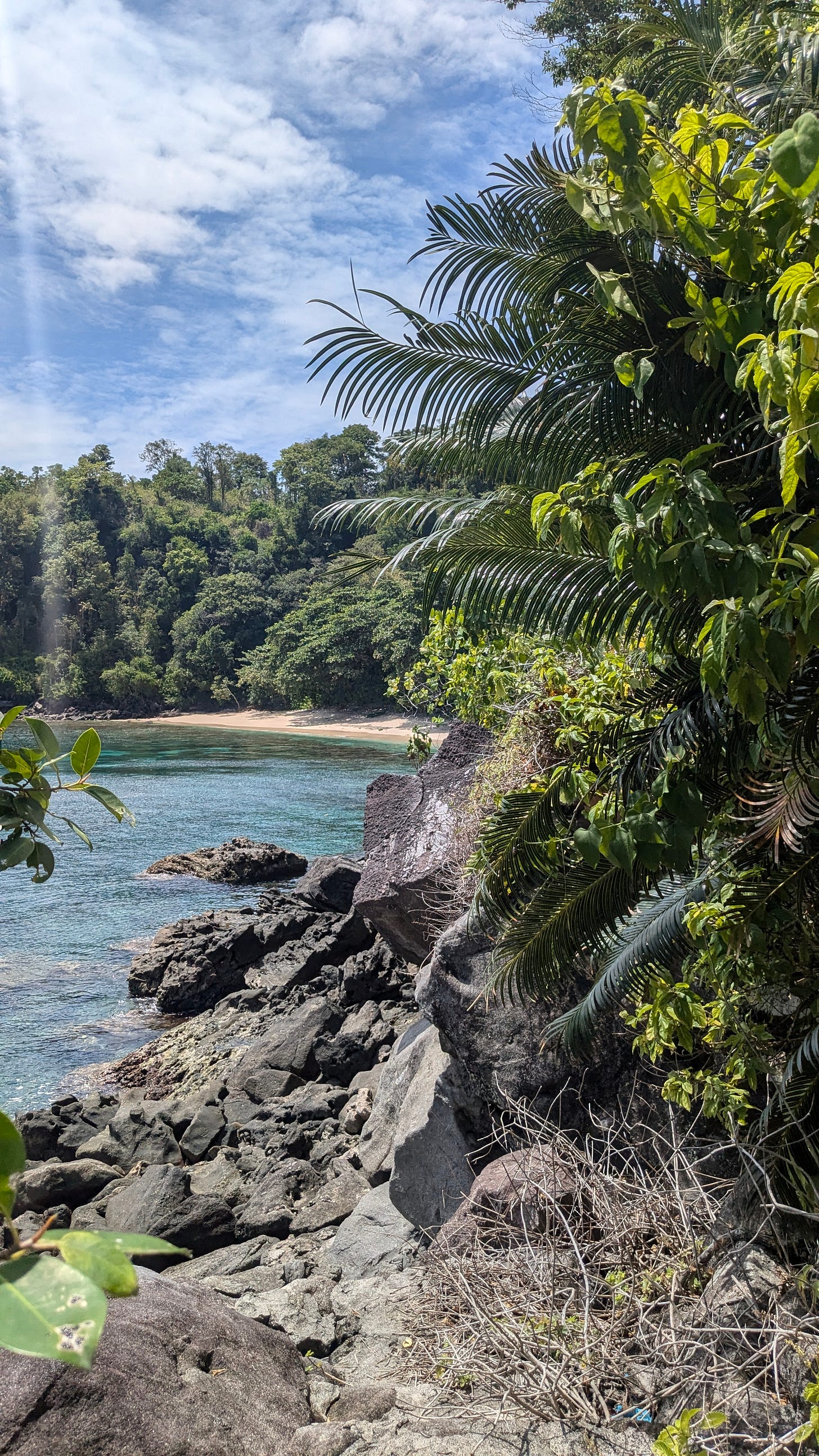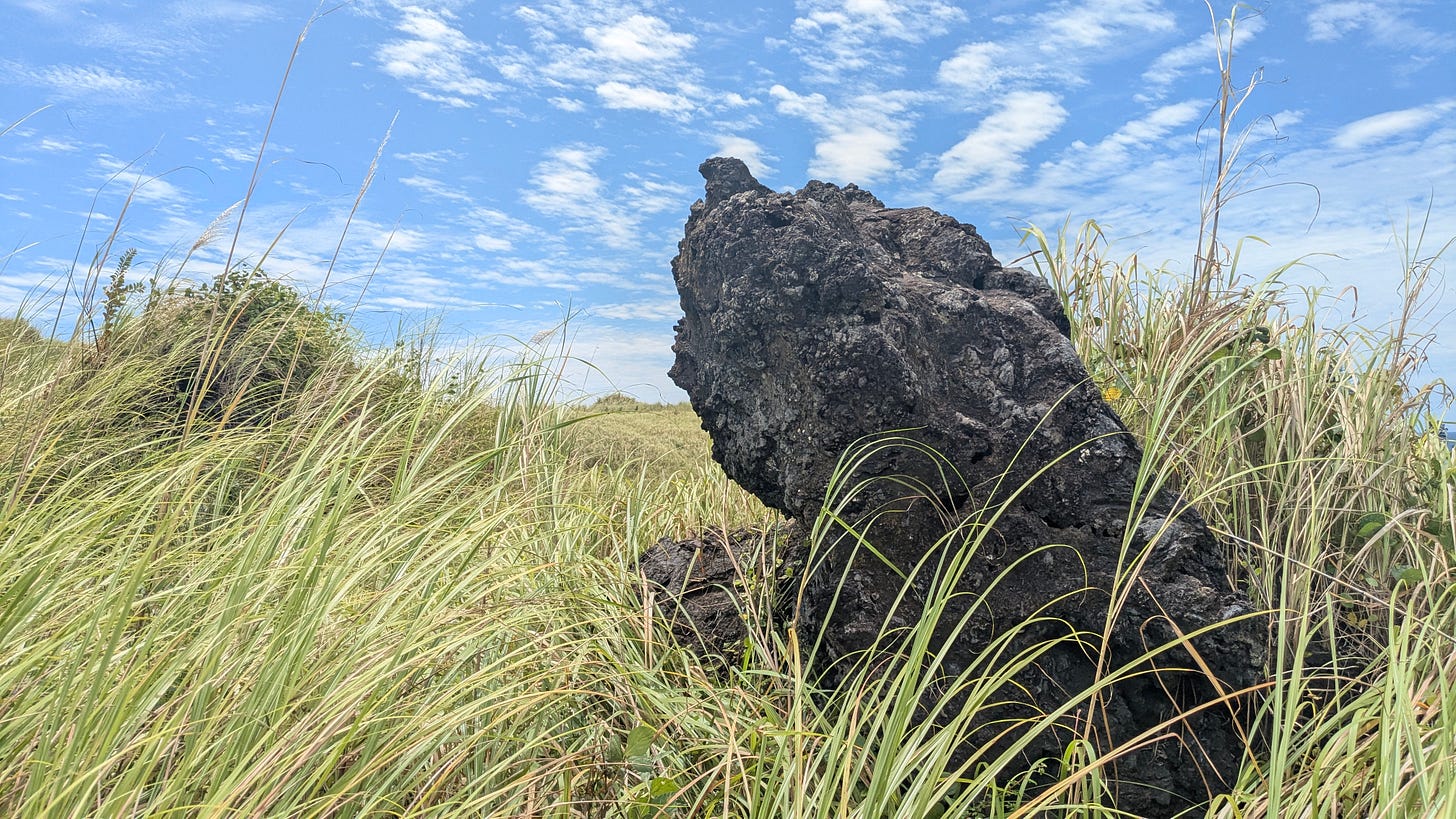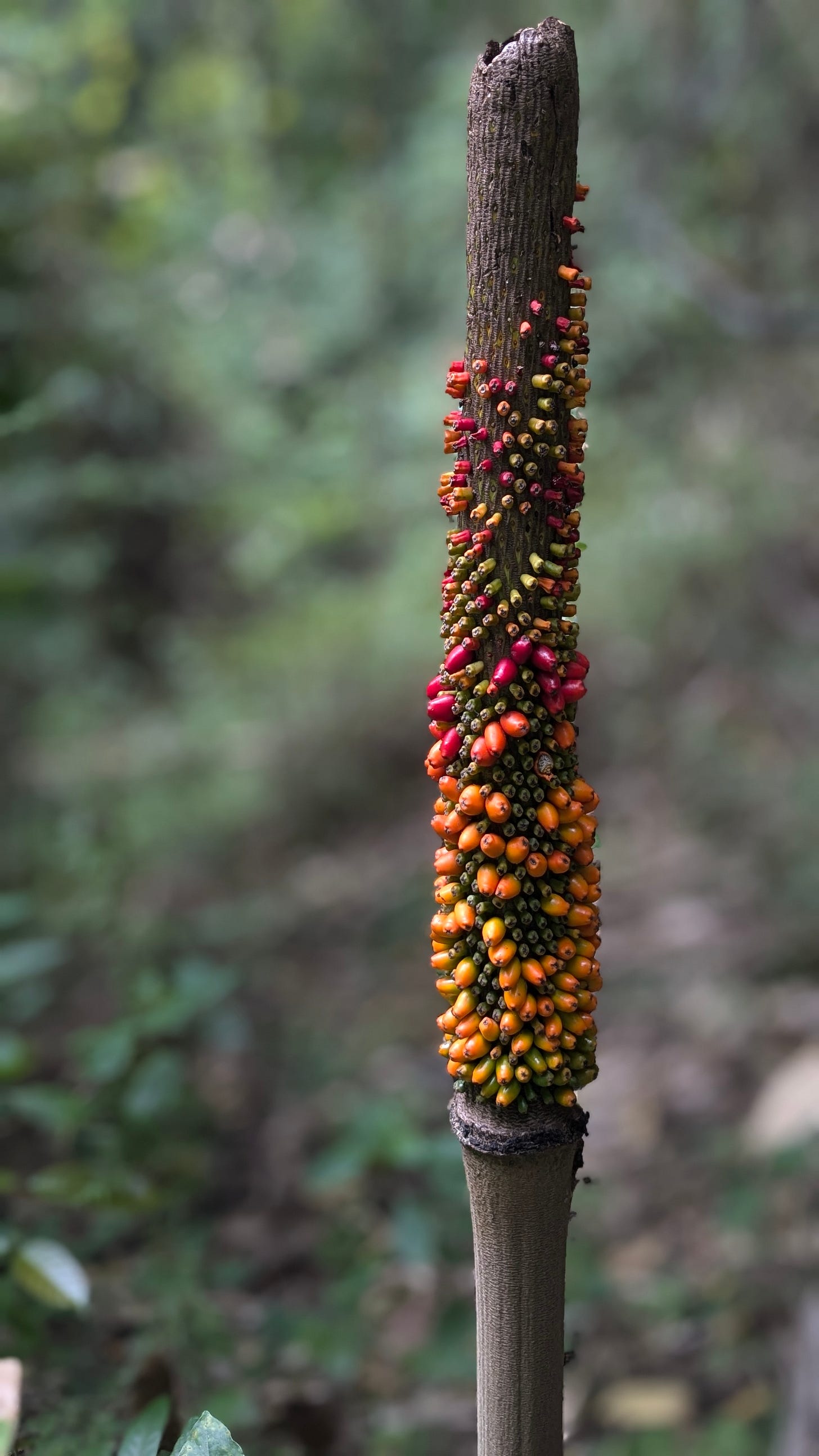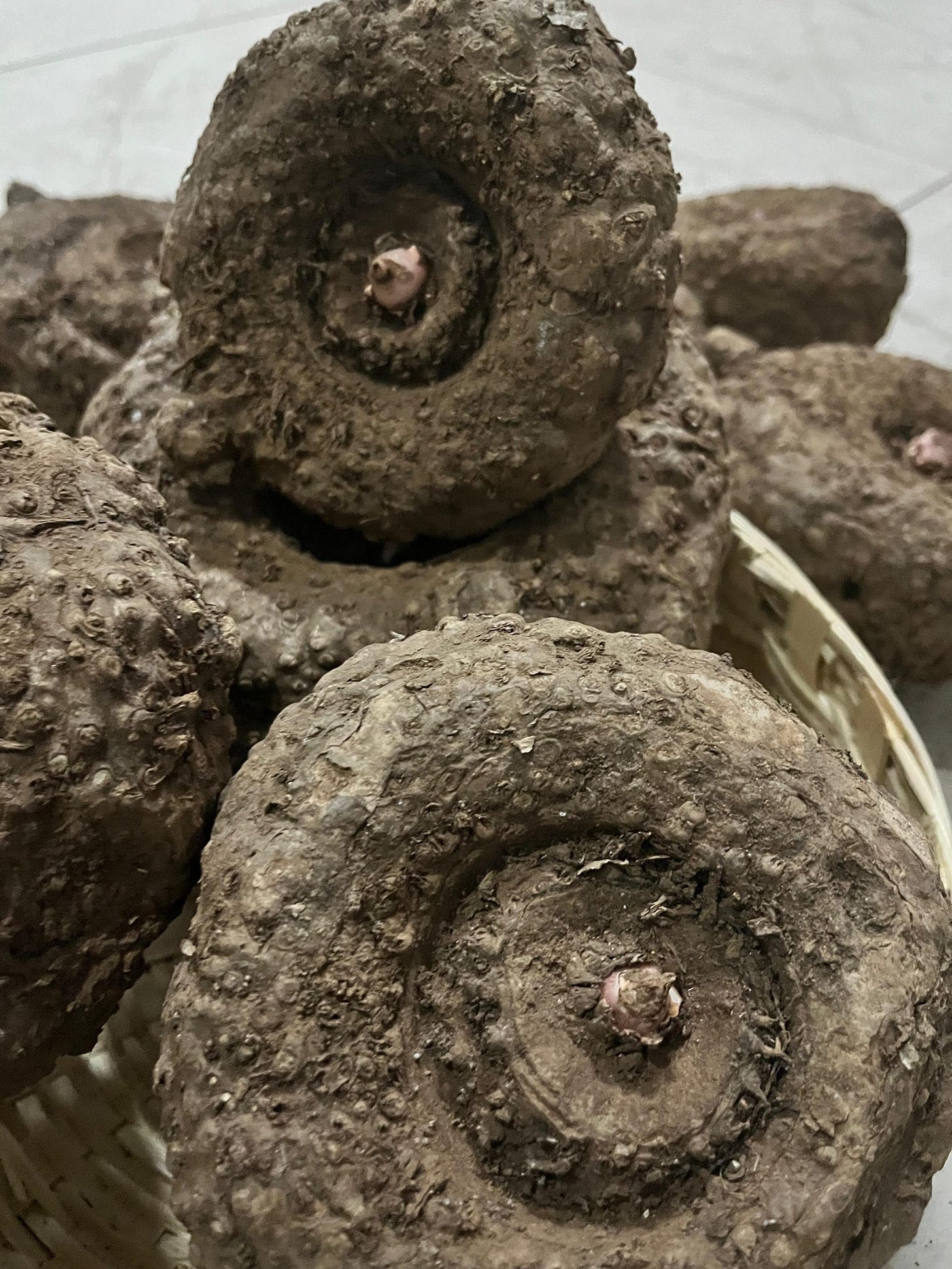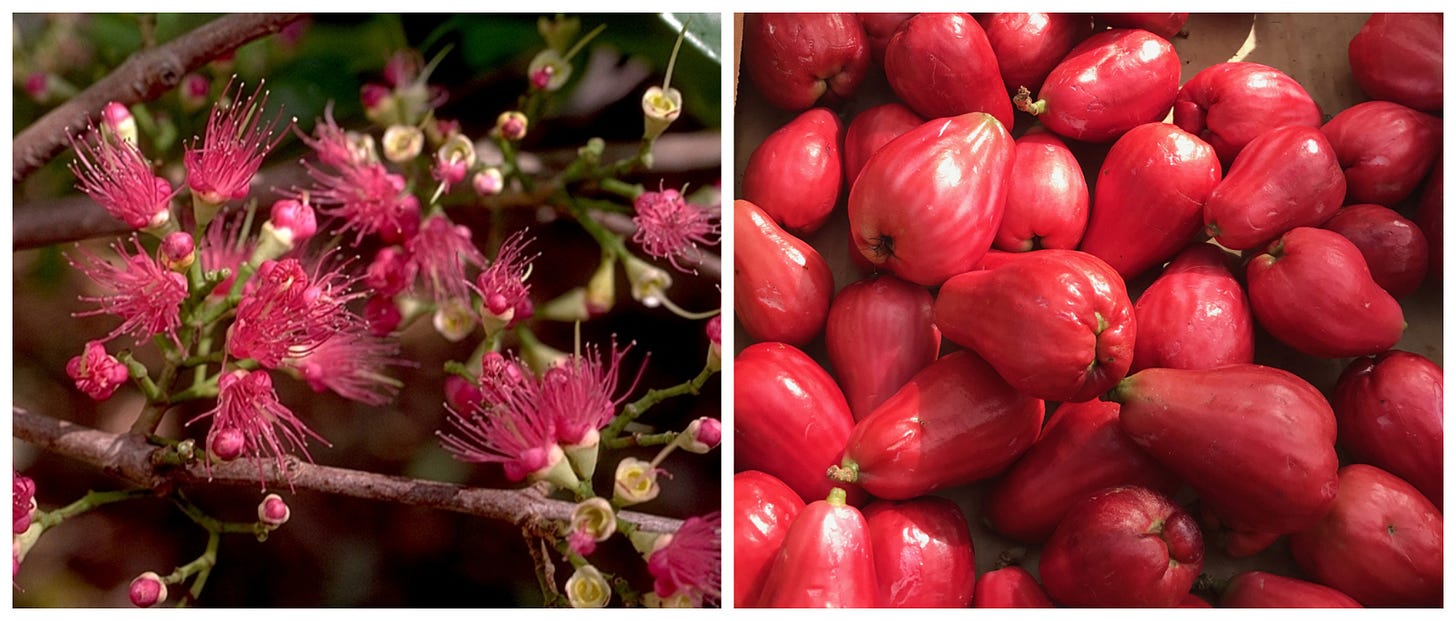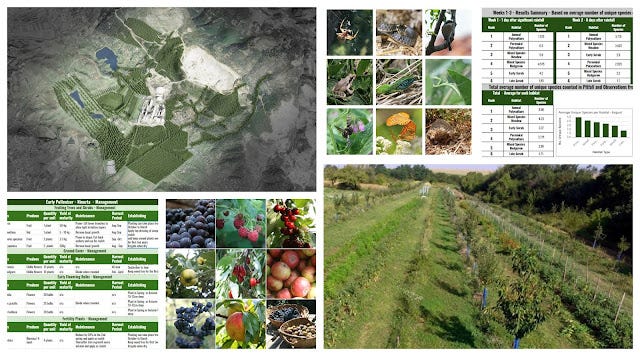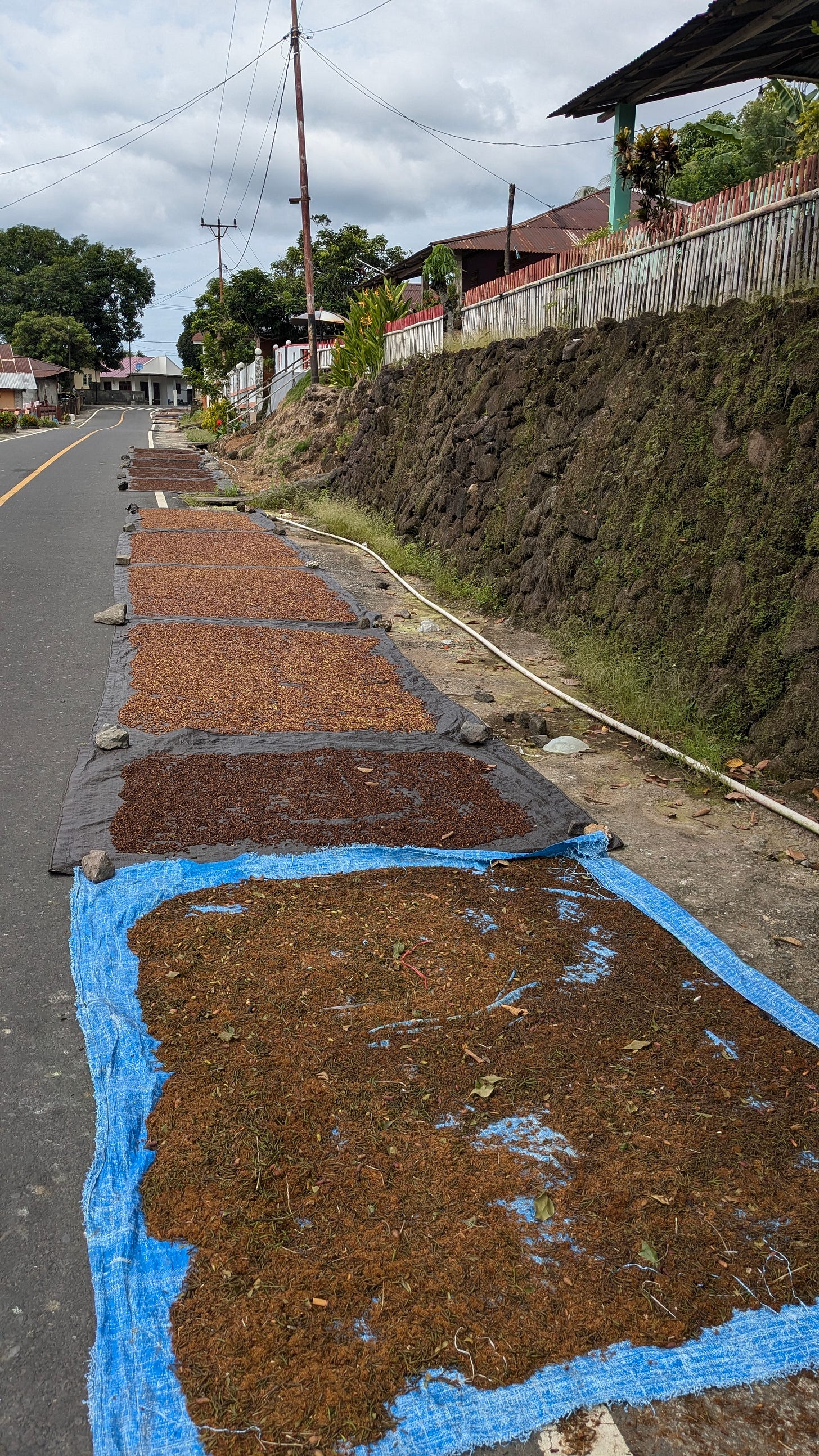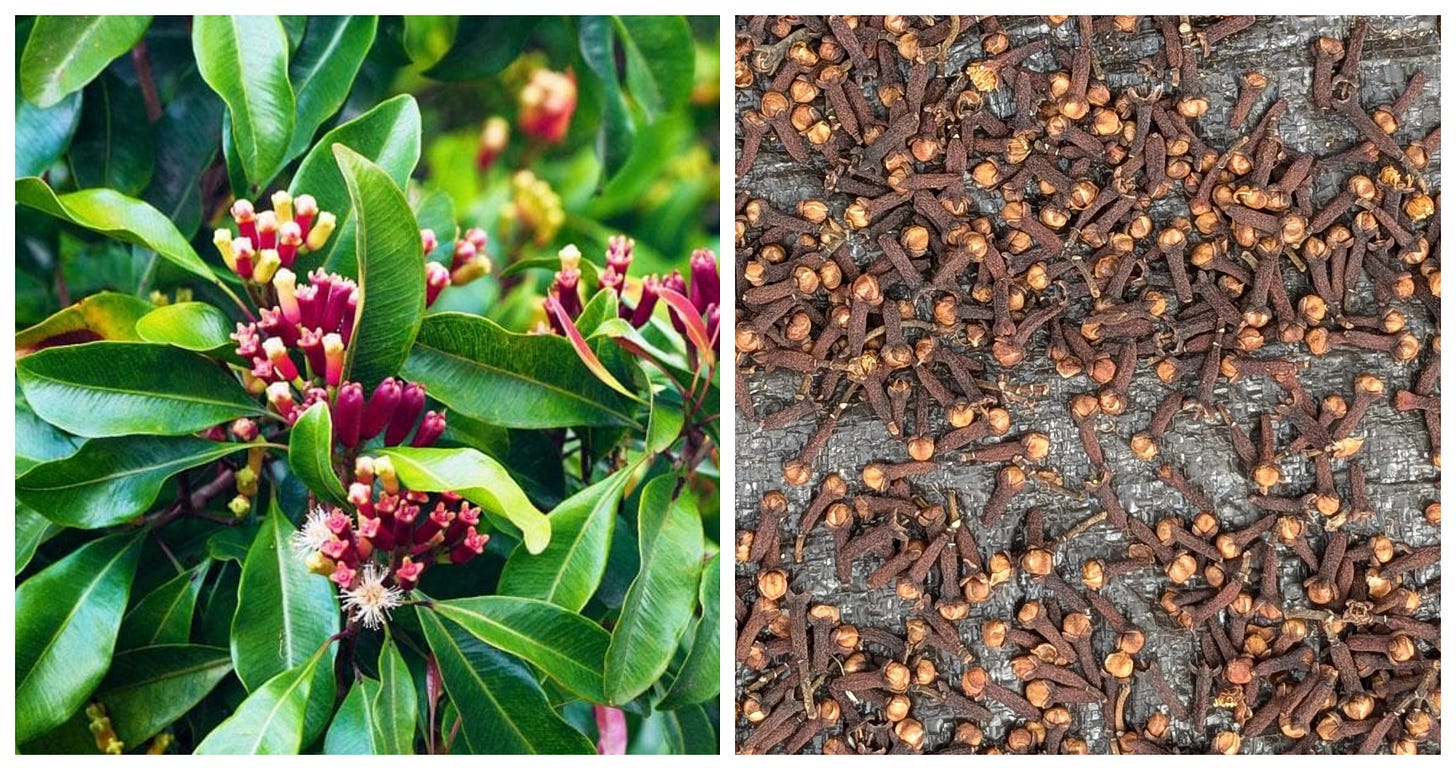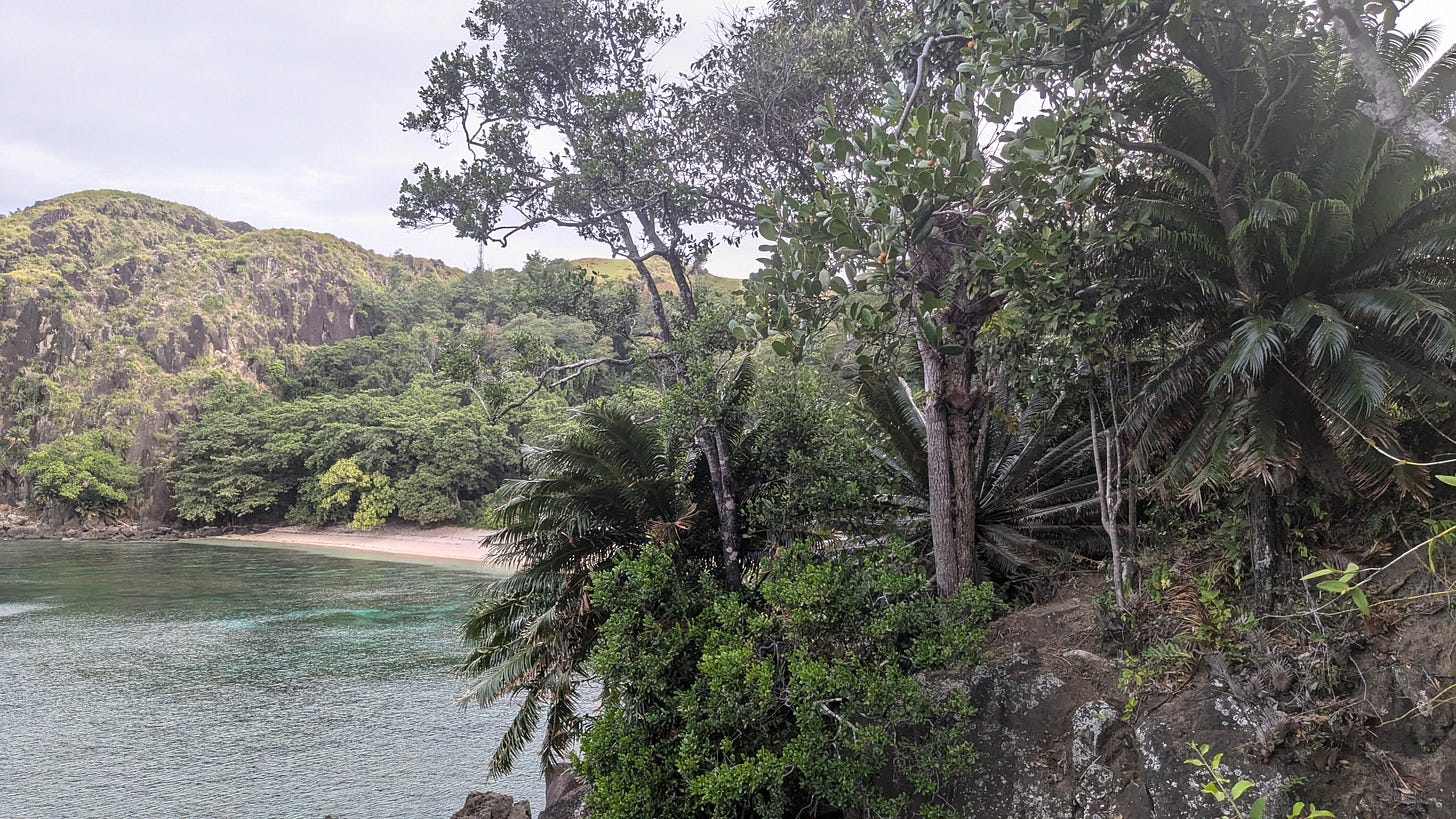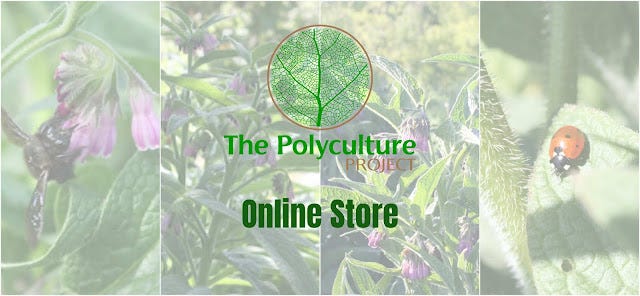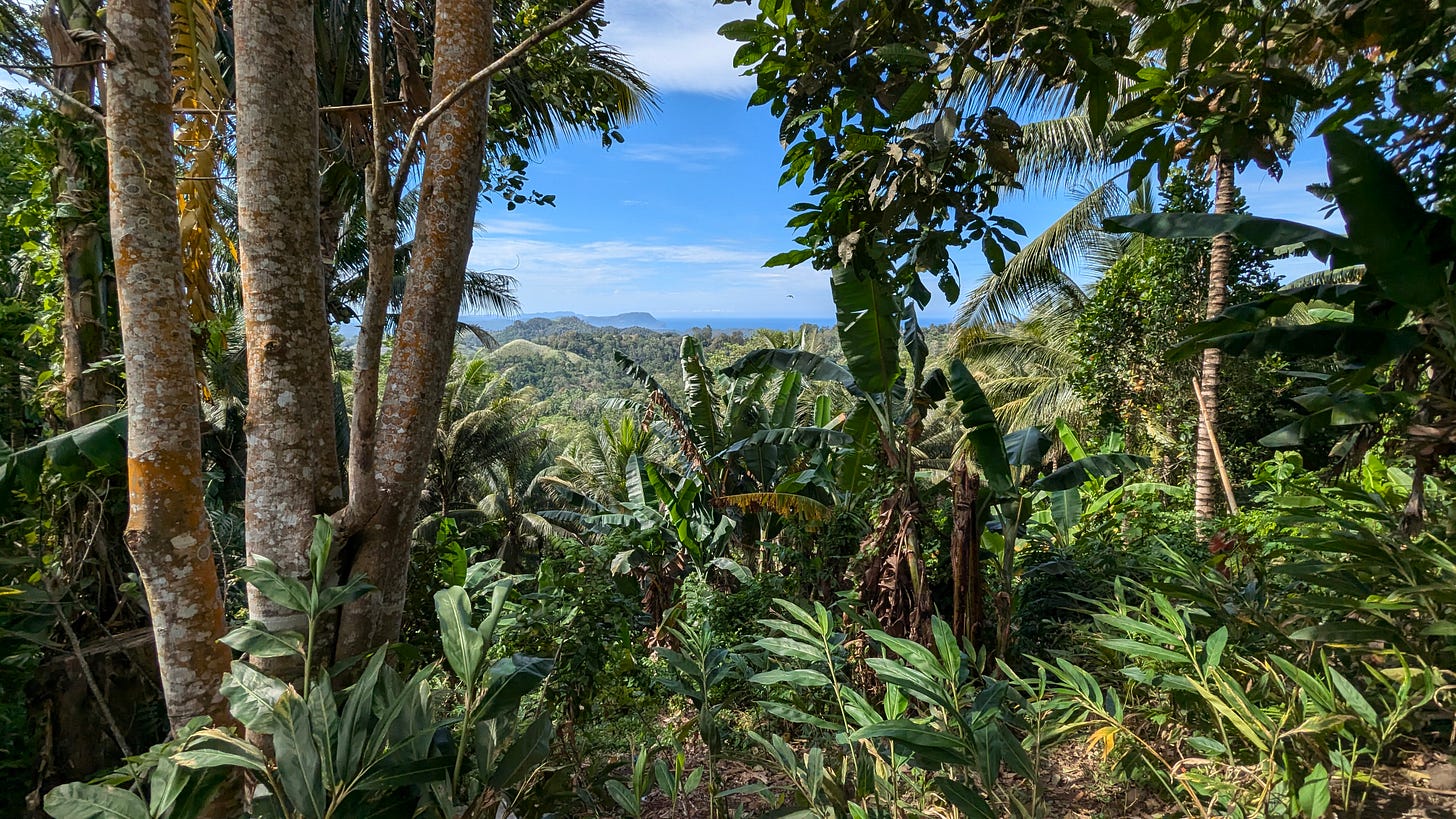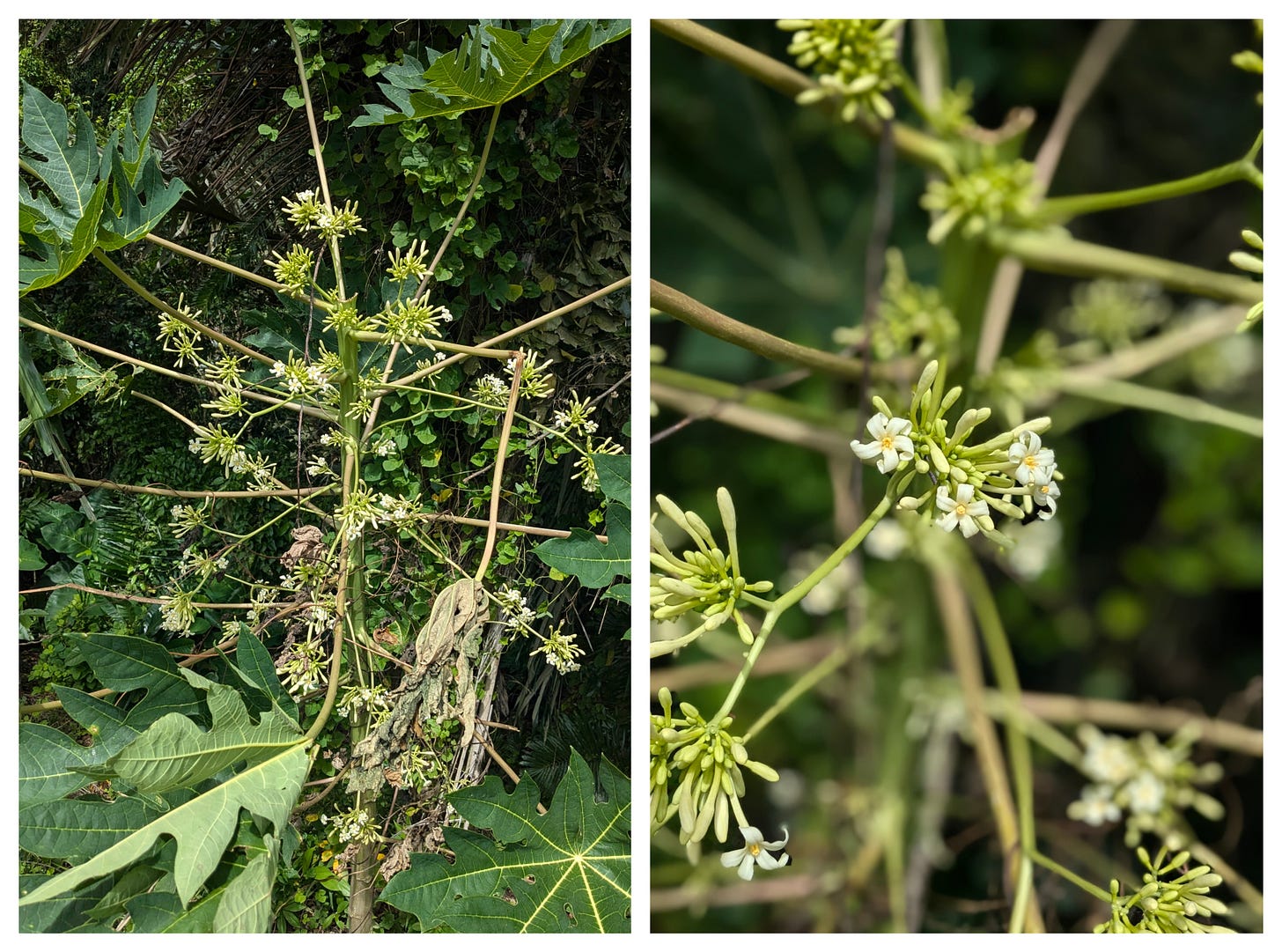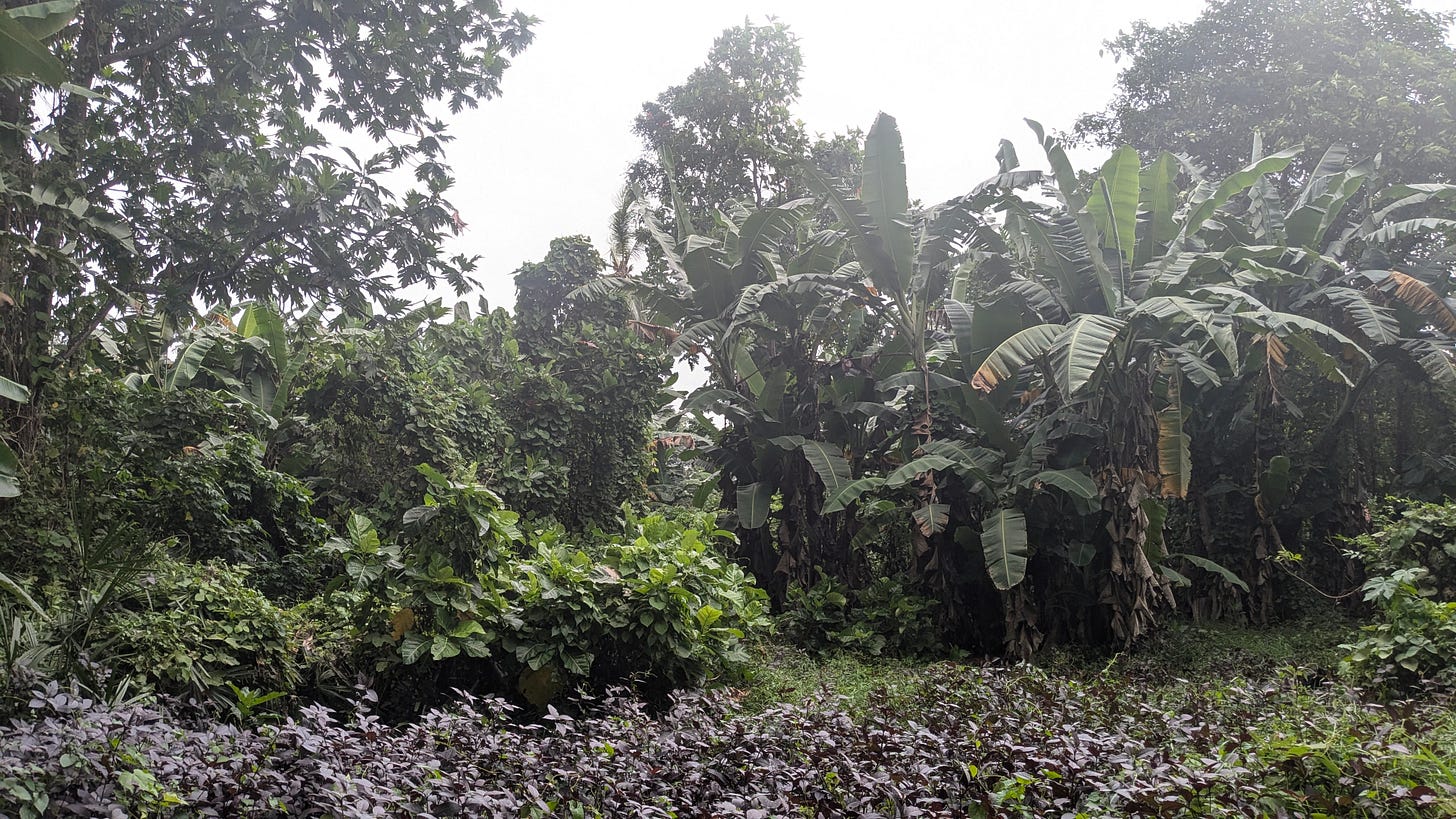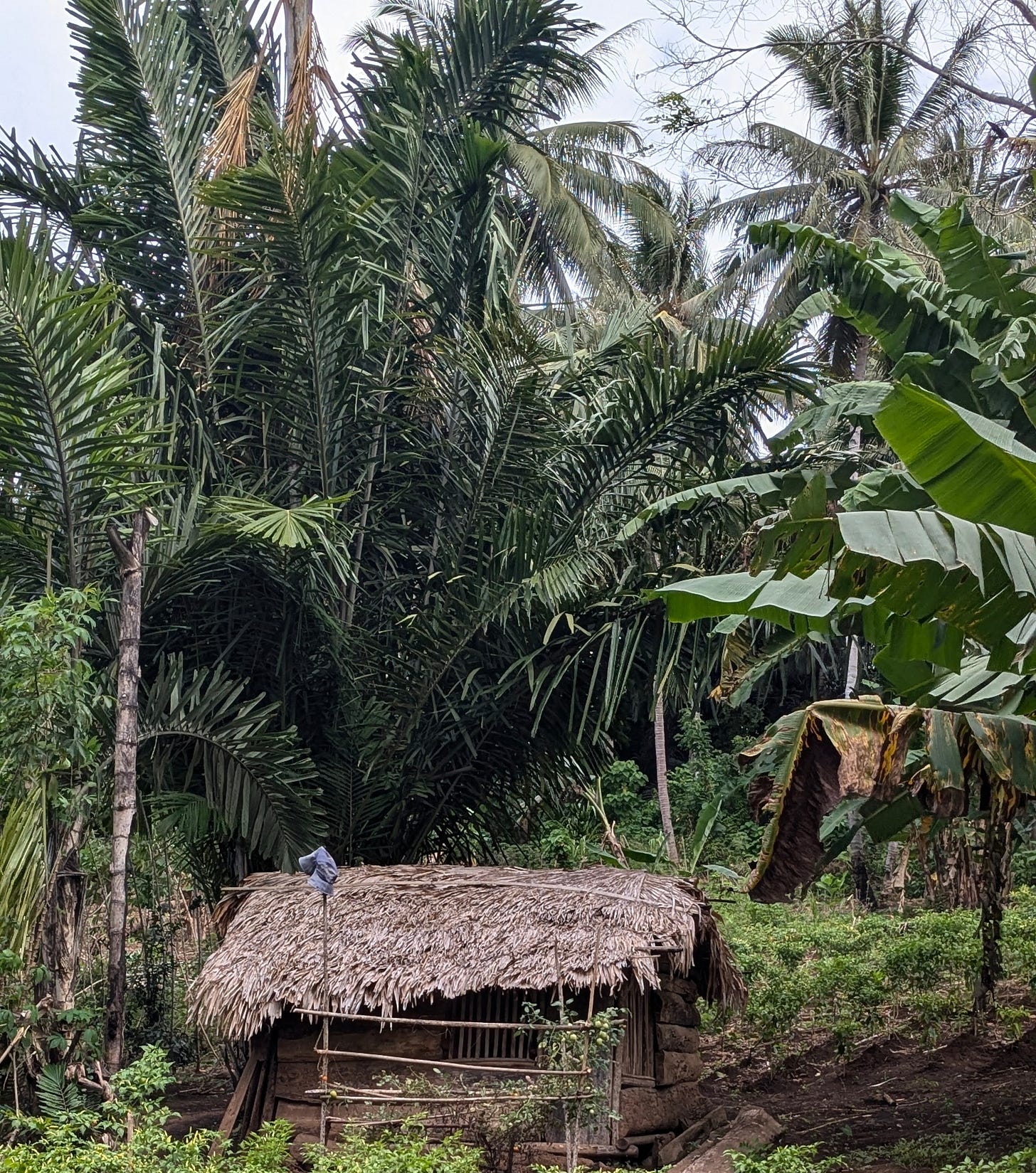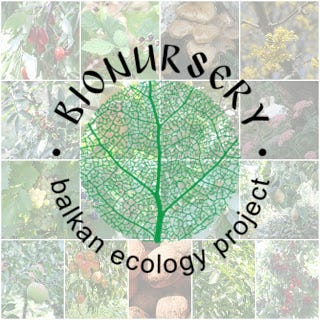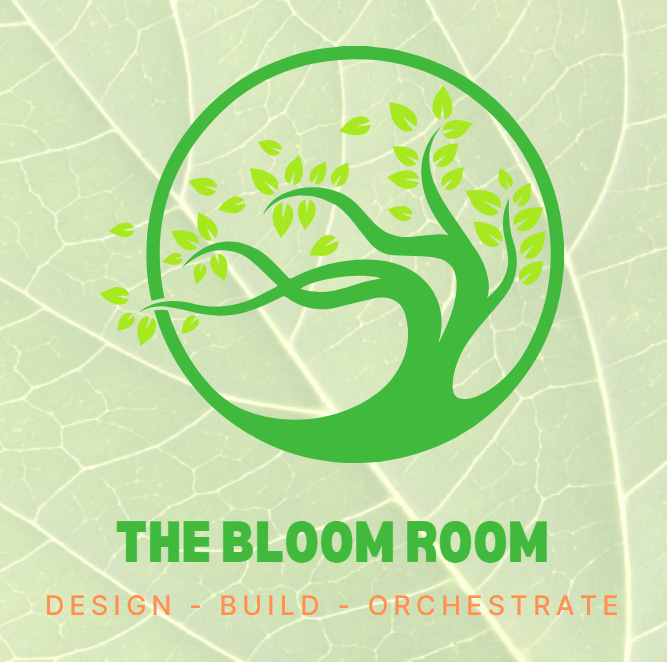South East Asian Travels - Exploring Indonesia - North Sulawesi - Tropical Forest Gardens, Paradise Beaches, Diving Delights and Volcanic Wonders
If you have been following my Substack or are a member of the Bloom Room you may be aware that I’ve been on the look out for a potential site in the tropics since last year with the aim of establishing a Tropical Polyculture Project site. Last year and earlier this year I had a look around Sri Lanka and Tanzania and this summer the plan was to explore South East Asia specifically a few of the many Islands of Indonesia. By early 2025 (following a revisit to Tanzania during the winter) the plan is to make a final decision on the location and move onto phase two of the project, finding the land and closing a deal. Right now I’m in the vast and wonderful world of Indonesia and during this post I’ll share some observations from travelling around North Sulawesi, a magical part of the world with everything you would expect to find in paradise and more.
We’ll look at some weird and wonderful plant encounters, incredibly productive polycultures of the region, amazing wildlife reserves in the area, including a site still recovering from a vast volcanic eruption 300 years ago with lava rock beaches and 2m deep ash soils, a world class marine reserve, a jungle reserve home to the smallest primate on the planet and some incredibly wild and isolated beaches.
The Area and the Route
I spent a few weeks in the area, starting the journey in Tongkaina, opposite Bunaken Island just north of Manado and made my way around the coastline over to Batu Angus opposite Lembeh Island and than crossed back overland to Manado.
Bunaken National Marine Park - Scuba Diving
My first port of call was Bunaken National Marine Park for some scuba diving. The place is a jewel in the crown of Indonesia's rich marine biodiversity.
The island, just a short boat ride from the mainland, is renowned for its stunning coral reefs, teeming with an incredible variety of marine life and is a diver's paradise, offering crystal-clear waters, dramatic drop-offs, and an abundance of colorful fish, turtles, and other exotic creatures.
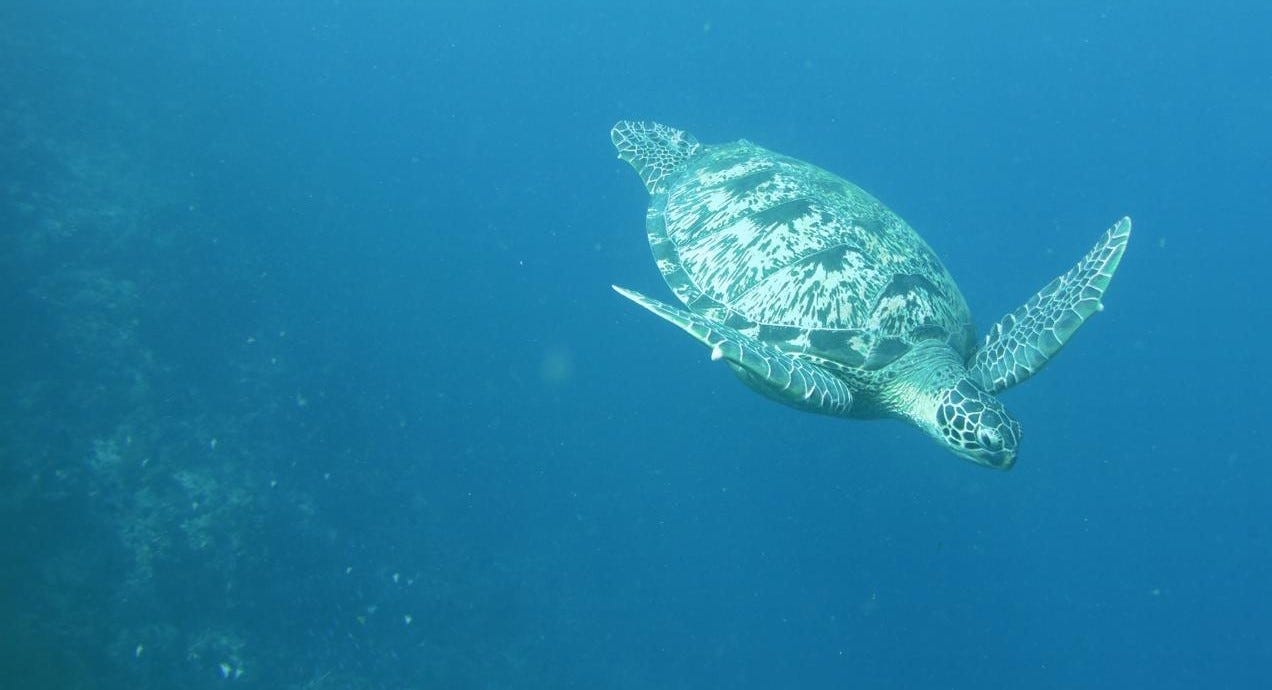
With its position at the heart of the Coral Triangle, Bunaken boasts an astonishing diversity of corals, making it a hotspot for underwater enthusiasts and scientists alike. Coral is as bizarre and mysterious as it looks. Despite its plant-like appearance, coral is actually composed of millions of tiny invertebrate animals called polyps. These polyps create intricate carbonate structures by secreting an exoskeleton near their base. Over countless generations, the colony gradually builds a massive skeleton, often reaching several meters in size.
Only the outer layer of a healthy coral reef is alive. Dead coral sections provide a foundation for other marine organisms to colonize. The complex skeletal framework of coral reefs offers a home for a vast array of marine life, forming a delicate and interdependent ecosystem
For diving I can totally recommend Thalassa Diving Resort and the Four Fish Guesthouse is a very warm, welcoming and comfortable place to stay with delicious home cooked food. There are also some great spots to stay on Bunaken Island.
Pulisan Beaches
Following the coastal road east from Manado the area is more reliant on local economic activities of fishing , farming and mining than tourism although there seem to be many governments incentives to develop eco-tourism in the area that appear to be gathering momentum.
Pulisan probably houses the finest beaches along the coastline in the area with a selection of wild beaches you need a boat to get to. You can hire a traditional fishing boat a.k.a. lipa-lipa or jukung with a captain for half a day or a full day from the main beach in Pulisan. It’s around $9 for half a day and $13 for a day and you just ask around where the fisherman hang out in the afternoon for a next day hire.
The beach I visited does not appear to have a name but it’s the one to the East of the Bantu Mandi diving spot marked on google maps.
A Fisherman lives on the beach on 2 week shifts mainly catching lobster in nets. A troop of Black Macaque - Macaca nigra visits the beach everyday to gorge on fruit from the Coconut and Tropical Almonds - Terminalia catappa. Although I only saw the monkeys in the trees, I was told they will come to the beach and have a swim after eating.

The waters are filled with a beautiful array of exquisite coral and all sorts of aquatic animals. The rock pools are full of a various species of crabs, rock-climbing goby and some type of short and stubby reptile (looks like a skink) darts around the dark rocks on the hunt.
I was told that large resort developers have their eye on the area but have recently been blocked by locals that would prefer to protect their piece of paradise. Good luck to them!
Many of the homestays that show up on google maps in the area are not finished or are not operating but I can recommend a nearby place called Pondok Wisata Noah with delicious food and homemade Cheptikus or asking around in the nearby villages where a local will most likely help you find a place.
Tangkoko Nature Reserve
Not far from Pulisan is one of the oldest nature reserves in Indonesia, with the first conservation area established in 1919. It now extends 8,718 hectares and protects at least 127 mammal, 233 bird, and 104 reptile and amphibian species. Of these 79 mammal, 103 bird, and 29 reptile and amphibian species are endemic to Sulawesi.
One of the specialties of the reserve is Spectral tarsier - Tarsius spectrumgurskyae. At sundown you can watch them come out of the deep folds of a Ficus benjamina buttress. A family of three that use the roost we were watching head out at dusk to begin their nocturnal insect hunt. Before they venture out they survey the surroundings for pythons and owls that prey on these tiny primates. When all is clear they will screech out the signal. If they discover their roost has been rumbled they will find a new spot before dawn.
The reserve also runs a research program into the behavior of the endangered Celebes crested macaque - Macaca nigra following various troops of the monkeys around the park on a daily basis and training up local guides that go onto work in the area. The guides in the park are very knowledgeable about the flora and fauna of the area and it was great tour run by the team at Renny's Tangkoko Safety Stop. It’s also a comfortable place to stay and just a short walk across the river to get to the main gate of the park.
Mount Tongkoko and Batu Angus Reserve
A dramatic backdrop to Tangkoko is provided by Mount Tongkoko and Batu Angus, a stratovolcano that last erupted in 1880. The reserve bears the stark imprint of this volcanic activity, with a vast lava flow cascading down the eastern flank of the mountain and into the sea, a striking testament to the region's dynamic geological history.
There a still vast patches of black ash but grasses that look and feel like Pampus have dominated the area. Pathways have been laid through the grasses with various watchtowers and shelters to rest and enjoy the view over the hills.
Deep volcanic earthquakes have been measured from 2002 - 2019 but it's peaceful and quiet for now. Such an amazing place that opened up my eyes to a whole new are of study, post eruption plant succession. It looks like the Cycads don’t mind the volcanic ash soils and are one of few trees growing through the dense grasses.
So bizarre that the earth around here spits out extremely hot giant rocks from time to time.
The tracks lead to a beach area where the massive lava flow from Mount Tongkoko Volcano entered the sea some 300 years ago. There are a few kiosks offering snacks and coffee and small restaurant in the park. It was the first time I've seen Sea lettuce Tree - Scaevola taccada and Padanus sp. - Screw pine as well as Tamarix sp. - Salt Cedar growing along the coastline in Sulawesi. Perhaps they were planted when the reserve was established.

The beautifully bizarre lava rock beach has waters full of aquatic spectacles for the snorkeler including some incredible coral formations and mini walls/ ravines that can be explored easily free diving and snorkeling from the surface.
It’s probably easier to enter the water from the opposite side that leads to the choppy waters of the Lembeh Strait that separates the islands of Sulawesi and Lembeh. The Lembeh Strait is known by some divers as “the best muck-diving site in the world” and is famous for its wonderful, photogenic underwater critters.
Weird and Wonderful Plants
Whenever in the tropics the sheer multitude of plants you come across is incredible and here are just a few of the weird and wonderful plants I came across during the trip.
Amorphophallus paeoniifolius - Elephant foot yam - I stumbled across this plant in the dense understory of a forest whilst surveying a potential plot just outside the village of Likupang. At first glance, from a distance, it appeared to be some kind of fungus growing on an old piece of Bamboo. A google search later revealed it to be a tropical plant native to Southeast Asia, renowned for its edible tubers. In fact it's a staple in many Southeast Asian, South Asian, and Pacific Island cuisines.
The plant boasts a unique appearance with a single, giant, umbrella-like leaf and large underground corms resembling an elephant's foot. Cultivated widely for its nutty-flavored corms, it also holds medicinal importance in traditional Indian medicine. Unfortunately I did not get to witness the plant in flower, as quite a spectacle it is, but I did see many of the plants in the leafing stage often planted around the the edges of polyculture coconut/banana groves, more on that later.
Underground corms are harvested with a pick axe or by digging when the top is completely withered and fallen. The crop is ready for harvest in 8-9 months after planting with an average yield of 30-40 t/ha.
You can find a good guide on how to grow these plants here
Syzygium malaccense - Malay apple - My first encounter with the Malay apple was with a heady perfume of sweet fruit wafting through the air as I navigated a winding mountain road. Intrigued, I brought my scooter to a halt, only to find the roadway strewn with the fallen fruits of a nearby tree.
A native to Southeast Asia, the plant features glossy leaves, striking red flowers, and large, round, red fruits with a sweet, tart flavor. Beyond its edible fruit, this versatile tree offers shade, ornamental value, timber and attracts birds and butterflies with its vibrant blooms and is a food source for the endangered Sulawesi crested macaque - Macaca nigra
Interestingly this plant is thought to be one of the first plants intentionally carried and cultivated by the Austronesian people as they migrated across the Pacific. They are thought to have took these trees with them on their long journeys and planted them in new lands as they settled.
Regenerative Landscape Design - Online Interactive Course
Want to learn how to design, build and manage regenerative landscapes? Join us on our Regenerative Landscape Design - Online Interactive Course. We look forward to providing you with the confidence, inspiration, and opportunity to design, build and manage regenerative landscapes, gardens, and farms that produce food and other resources for humans while enhancing biodiversity.
You can access the course material at anytime and join the live sessions and interactive forums that run from May - Oct every year. All members of the Bloom Room receive a 500 EUR discount. To take up this offer all you have to do is become an annual subscribers to our Substack and register here with the promo code BLOOM.
I look forward to you joining !
White mangrove - Sonneratia alba are the dominant species of mangrove that populate the vast stretches of the coastline in Sulawesi and is one of the most resilient mangrove species, capable of thriving in environments with up to 50% seawater concentration. This incredible adaptability is due to specialized mechanisms that allow it to tolerate and even thrive in high salinity conditions.
White mangroves are often found in low intertidal zones near estuaries, where they face constant fluctuations in salinity. Their ability to withstand such harsh conditions makes them crucial for coastal ecosystems and protection. There are numerous Mangrove Parks in North Sulawesi that have recently become protected areas including Pantai Mangrove Maliamboa photographed in the background of the image below
The plants are used as locally for firewood and the wood is used in the construction of houses and ships. The sour fruits are used to flavor fish, and are sometimes eaten raw. The leaves are also eaten raw or cooked across Indonesia and Malaysia.
Clove - Syzygium aromaticum - Cloves are the dried flower buds of the Syzygium aromaticum tree, a tropical evergreen native to the Maluku Islands in Indonesia but now commonly planted and cultivated across the tropical regions of the world. Renowned for their strong, warm, and slightly sweet flavor, cloves have been a prized spice for centuries. This time of year the cloves are harvested dried on the streets and gardens of the villages in North Sulawesi with the fragrant aroma filling the air!
The aromatic compounds in cloves, particularly eugenol, give them their distinctive taste and scent. They are widely used in both sweet and savory dishes, from baked goods and curries to marinades and pickling. Beyond culinary applications, cloves have been used in traditional medicine for their potential analgesic and antiseptic properties.
Historically, cloves were a highly sought-after commodity, leading to exploration and trade routes that shaped global commerce and geopolitics to this day. Major wars have been fought over this plant, most notably between the Dutch and English in the 1600s, over who would control the trade of this spice.
Clerodendrum paniculatum -Pagoda Flower - I was very grateful to meet this striking tropical shrub growing on the borders of a village forest garden.
Native to tropical Asia and parts of the Pacific, it's renowned for its tall, pyramid-shaped flower clusters that give it its name. These vibrant blooms, typically red or orange, attract a variety of pollinators, especially butterflies.
The plant can spread via suckers to form colonies and is harvested from the wild for local use as a medicine with an infusion of the leaves drunk as a purgative. The leaves are also used as a poultice for treating burns, wounds and ulcers. Most commonly nowadays it’s grown as an ornamental plant due to its showy appearance and relatively easy care. It prefers warm, humid conditions and well-draining soil.
Cycas spp. - Cycads are plants I have often seen growing in amenity planting all across the tropics and as indoor plants but this is the first time I had to pleasure to meet these prehistoric beauties growing in the wild. I could not find much info on Cycas spp. of Sulawesi but they are relatively uncommon in Indonesia compared to other areas in pacific region with only 4 (or 10 according to some reports) species found growing in Indonesia.
Their fossil record dates back to the late Carboniferous period, which was around 300-325 million years ago. This makes them contemporaries of the dinosaurs although recent research has shown that the current diversity of cycads is actually quite young, with most species evolving only within the last 12 million years.
They seem to do well on the coastal rocks and cliff faces as well as in the under story of the woodland margins. I’d expect this to be one of first plants that will colonize the gold mines that operate in the area, once they have been abandoned.
Welcome to our Online Store where you can find Forest Garden/ Permaculture plants, seeds, bulbs, and Polyculture multi-packs along with digital goods and services such as Online Courses, Webinars and eBooks. We hope you enjoy the store and find something you like. It's your purchases that keep our Project going.
You can also find our full list of trees. shrubs and herbs for forest gardens on our nursery website.
Tropical Polycultures
Indonesia's landscapes are a testament to the power of polyculture. Beyond the iconic rice paddies, polyculture farming dominates the countryside. Blessed with volcanic soils, abundant sunlight, and ample rainfall, the region provides ideal conditions for cultivating a diversity of crops. These factors combine to create lush, thriving polyculture systems that are a hallmark of Indonesian agriculture.
Here’s an example of a Polyculture Forest Garden typically found in the village gardens that combine three sometime four layers of fruit trees with annual and perennial crops in the understory. Cocos nucifera - Coconut tower over the understory and appear to grow much taller here in Indonesia than anywhere else I’ve seen them grow (perhaps it’s the cultivar or maybe just the ideal growing conditions here. Carica papaya - Papaya and Musa sp. - Banana will grow well under the Coconut and root crops such as Canna indica - Edible Canna and herbs such as Cymbopogon citratus - Lemon Grass along with vegetables Solanum melongena - Aubergine and Phaseolus coccineus - Runner Beans grow in the layer below.
Carica papaya - Papaya grow pretty much everywhere, like weeds I’m told. Most cultivars are dioecious having both male and female flowers on separate plants and require both plants to produce fruit. The leaves and flower buds feature often in Indonesian cuisine. They are slightly bitter but highly nutritious and are often added to a spinach side dish served with Fish. Its the male plants that produce the edible flower buds.
North Sulawesi's agriculture is primarily driven by smallholder farms focused on plantation crops, which account for about half of the agricultural land. Benefiting from favorable climate and fertile volcanic soil, the region produces a variety of crops, including spices like cloves, nutmeg, and pepper, as well as coconut, cocoa, coffee, and cashews, banana and limes.
Another common polyculture in the area is Cattle within the coconut groves. I saw the same practice in Sri Lanka on many occasions.
The most common breed used is Bali and it thought their domestication occurred around 3500 BC and to have originated from Banteng, a species of wild bovine found in Southeast Asia.
Bananas are included in the understory of the Coconut palms along with the cattle and included around the perimeter of the coconut groves you can find the edible Amorphophallus paeoniifolius - Elephant foot yam mentioned above and some kind of Legume tree , probably grown for cattle fodder. Papaya and Mango are also commonly used for perimeter planting.
The odd Sugar Palm - Arenga pinnata can also be found within the Coconut groves. These palms thrive with more space due to their large, shade-casting leaves and are used for sugar production and to make a local spirit called Cheptikus. This spirit is frequently offered before meals at local eateries. The owner will insist you drink it in one go, while a small crowd watches your reaction to the fiery liquid. Little did they know my life in Shipka has prepared me for such a challenge, Rakia :)
That’s all for now !
Support Our Project
If you appreciate the work we are doing you can show your support in several ways.
Become a member of the Bloom Room. A $70 annual subscription to our Substack provides you with access to live sessions, design tutorials, a members forum and more, see details here.
Make a purchase of plants or seeds from our Nursery or Online Store
Joining us for one of our Practical Courses or Online Courses
Comment, like, and share our content on social media.
We offer a diversity of plants and seeds for permaculture, forest gardens, and regenerative landscapes including a range of fruit and nut cultivars. We Deliver all over Europe from Nov - March. - Give a happy plant a happy home :)
Want to learn more about Regenerative Landscape Design? Join The Bloom Room!
The Bloom Room is designed to create a space for more in-depth learning, for sharing projects and ideas, for seeking advice and discovering opportunities.
Ultimately, it aims to build a more intimate, interactive, and actionable relationship between members, a way for the Bloom Room community to support each other’s projects and learning journeys, and to encourage and facilitate the design, build, and management of more regenerative landscapes across our planet.
What you can expect as a member of the Bloom Room
As a member of the Bloom Room you can expect;
Access to an interactive forum where you can ask questions, direct what type of content you would like to see as well as share your own content and projects.
Monthly live session featuring general Q&A and tutorials on design software for creating and presenting polycultures.
Live session every month for members to showcase your projects, plans, designs, and gardens, with guest speakers from the community.
Full Access to all of the content on Substack
500 EURO discount for on our Regenerative Landscape Design - Online Interactive Course.
Future opportunities to join our Global Regenerative Landscape Design and Consultancy Service, with potential roles for those with the will and skill to join our design team.
An opportunity to take part in the group ownership of a Regenerative Landscape. You will find more details on that here.
Become a paid subscriber to our Substack to join. The annual subscription is currently $70 and the monthly subscription is $7 (monthly subscription excludes discounts for products and services) . You can join here, we look forward to meeting you!




